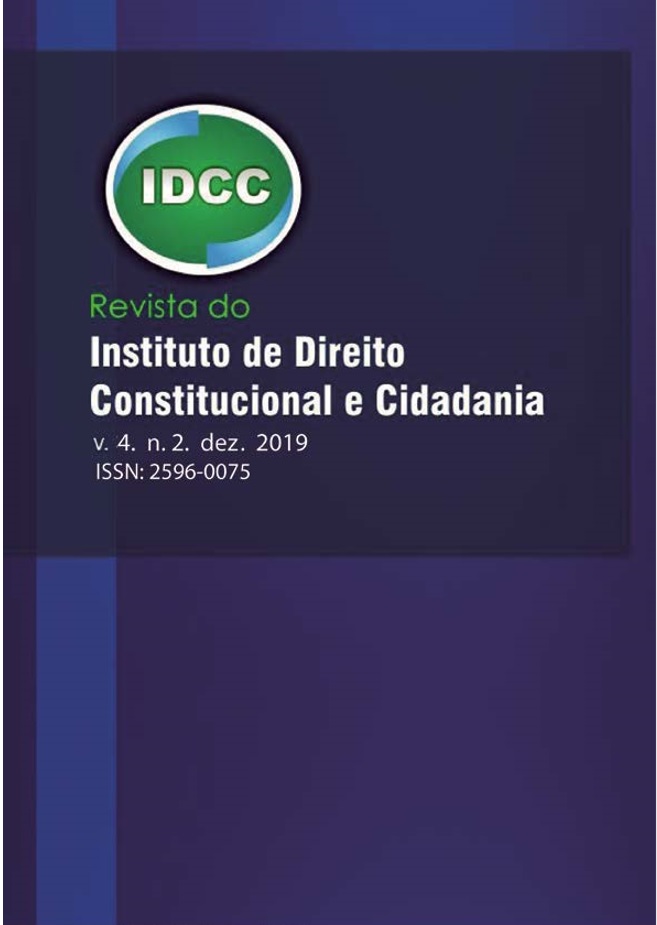A corte suprema e o seu papel atual perante a sociedade
Judicialização e ativismo judicial, meios adequados?
DOI:
https://doi.org/10.48159/revistadoidcc.v4n2.julias.leaojrKeywords:
Federal Court of Justice, Countermajority Paper and Representative Pape, Democracy, Judicialization, Judicial ActivismAbstract
The present article proposes an analysis of the current performance of the Federal Supreme Court before the society. The Court's action, as well as countermajority, became also representative, in meeting the social demands not satisfied by those elected through a majority system.
The "populism" brought to the Judiciary must be observed so that there is no deviation, and decisions must always be based on the balance, observance of the observance of fundamental rights, norms, values and constitutional principles, always aiming at social welfare.
Through the search for the effectiveness of the rights, the number of lawsuits has increased considerably, and the Judiciary, called to manifest itself, in order to guarantee the rights provided for in the laws, gives the final say on political, social, economic or moral issues. , thus, the judicialization. On the other hand, when his role is more proactive and expansive in interpreting the Constitution, he does so through judicial activism, which is not confused.From this point of view, the aim is to demonstrate the importance of judicialization and judicial activism and the balance that must always be observed in order for the State to remain democratic, that is, non-elected judges enforce the laws, which were elaborated by the representatives of the people, those who are elected. Therefore, whenever the Judiciary is called to manifest it must do so in order to ensure the good of all, respecting the will of the majority, which is verified through democracy.
References
BARROSO, Luís Roberto. Retrospectiva 2008. Ano do STF: Judicialização, ativismo e legitimidade democrática. Disponível em: . Acesso em: 11 de setembro de 2018.
BARROSO, Luís Roberto. Aula com o professor Luís Roberto Barroso: Judicialismo e Ativismo Judicial. Disponível em: Acesso em: 11 de setembro de 2018.
BARROSO, Luís Roberto. A razão sem voto: O Supremo Tribunal Federal e o governo da maioria. In.: NOVELINO, Marcelo et FELLET, André. Separação de Poderes: aspectos contemporâneos da relação entre executivo, legislativo e judiciário. Mutações Constitucionais. Salvador: Juspodivm, 2018.
BRASIL, Constituição da República Federativa do Brasil de 1988. Brasília, 05 de outubro de 1988. Disponível em: . Acesso em: 11 de setembro de 2018.
JÚNIOR, G.S.L.; JÚNIOR, J.A.S. O neoconstitucionalismo no Brasil e o protagonismo do Poder Judiciário: O caso do Supremo Tribunal Federal.
LEWANDOWSKI, Enrique Ricardo. O protagonismo do Poder Judiciário na era dos direitos. Disponível em: < http://bibliotecadigital.fgv.br/ojs/index.php/rda/article/viewFile/7529/6043>. Acesso em: 13 de setembro de 2018.
MANSUR, Sâmea Luz. O Fenômeno da Judicialização na Sociedade Contemporânea: Breves apontamentos sobre o termo “Judicialização” frenquentemente citado em informativos do STF e STJ. Disponível em: . Acesso em: 11 de setembro de 2018.
MORAES, Alexandre de. Direito Constitucional. 32ª edição. São Paulo: Ed. Atlas: 2016.
NOVELINO, Marcelo. Curso de Direito Constitucional. 13ª edição. Salvador: Ed. JusPovim, 2018.
SANTANA, Pedro Victor. Ativismo Judicial do Supremo Tribunal Federal: Impactos na Ordem Democrática do Brasil. Disponível em: Acesso em: 11 de setembro de 2018.
TOFFOLI, Dias. Dircurso de posse como presidente do STF. Disponível em: Acesso em: 14 de setembro de 2018.
Downloads
Published
How to Cite
Issue
Section
License
Copyright (c) 2019 Lívia Pacheco de Freitas Juliasz, Teófilo Marcelo de Arêa Leão Júnior

This work is licensed under a Creative Commons Attribution 4.0 International License.
Você tem o direito de:
Compartilhar — copiar e redistribuir o material em qualquer suporte ou formato
Adaptar — remixar, transformar, e criar a partir do material para qualquer fim, mesmo que comercial.
O licenciante não pode revogar estes direitos desde que você respeite os termos da licença.
De acordo com os termos seguintes:
Atribuição — Você deve dar o crédito apropriado, prover um link para a licença e indicar se mudanças foram feitas. Você deve fazê-lo em qualquer circunstância razoável, mas de nenhuma maneira que sugira que o licenciante apoia você ou o seu uso.
Sem restrições adicionais — Você não pode aplicar termos jurídicos ou medidas de caráter tecnológico que restrinjam legalmente outros de fazerem algo que a licença permita.

